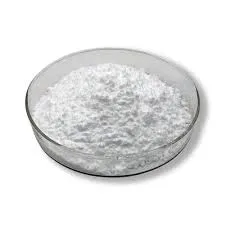
Dec . 04, 2024 16:07 Back to list
hpmc solution
Understanding HPMC Solutions A Comprehensive Overview
Hydroxypropyl Methylcellulose (HPMC) is a versatile polymer derived from cellulose, a naturally occurring polymer abundantly found in plant cell walls. Over the years, HPMC has gained significant attention in various industries, particularly in pharmaceuticals, food, construction, and cosmetics, due to its unique properties and multifaceted applications. This article explores the importance of HPMC solutions, their formulation, and their diverse uses.
What is HPMC?
HPMC is a water-soluble derivative of cellulose characterized by its hydroxypropyl and methyl groups. These modifications enhance its solubility in water and form a viscous solution. HPMC is a white, odorless powder that is non-toxic and biodegradable, making it a preferred choice in numerous applications. Its properties, such as gel formation, thickening, binding, and stabilizing, render it highly useful in different sectors.
Formulation of HPMC Solutions
The formulation of HPMC solutions involves dissolving the powder in water to create a gel-like consistency. The concentration of HPMC in the solution can vary, typically ranging from 2% to 5%, depending on the intended application. When mixed with cold water, HPMC swells to form a viscous gel. This process is crucial as it influences the rheological properties and functionality of the solution, impacting its performance in various applications.
Applications of HPMC Solutions
hpmc solution

1. Pharmaceuticals HPMC solutions are widely used in the pharmaceutical industry as excipients in drug formulation. They are significant in creating controlled-release formulations, ensuring that medications are released gradually into the bloodstream. This property allows practitioners to tailor the release profiles of drugs, improving efficacy and patient compliance. Additionally, HPMC is utilized in the production of capsules, suspensions, and ointments due to its binding and thickening capabilities.
2. Food Industry In the food industry, HPMC is employed as a thickening agent, stabilizer, and emulsifier. It improves the texture and consistency of food products, enhances the mouthfeel, and prolongs shelf life. Moreover, HPMC solutions are beneficial in gluten-free baking, helping to mimic the texture that gluten would typically provide, thereby improving the quality of gluten-free products.
3. Construction HPMC serves an essential role in construction materials, particularly in adhesives, mortars, and plasters. The addition of HPMC enhances the workability, water retention, and adhesion of these materials, contributing to improved construction practices. When added to tile adhesives, it prevents premature drying, allowing for better tile placement and durability.
4. Cosmetics and Personal Care In the cosmetics industry, HPMC is used as a thickener and emulsifier in creams, lotions, and gels. Its ability to form a stable gel makes it ideal for various formulations, improving texture and spreadability. Additionally, HPMC is praised for its moisturizing properties, making it a valuable ingredient in personal care products.
Conclusion
HPMC solutions are integral to various industries, owing to their unique properties and functional benefits. The ability to form viscous gels, enhance stability, and improve texture makes HPMC an invaluable polymer in pharmaceuticals, food production, construction, and cosmetics. As research continues in this field, the versatility and applications of HPMC are likely to expand further, promising innovative solutions to meet the demands of a rapidly evolving market. Understanding and utilizing HPMC solutions can lead to significant advancements in product formulation and development across multiple industries.
-
Versatile Hpmc Uses in Different Industries
NewsJun.19,2025
-
Redispersible Powder's Role in Enhancing Durability of Construction Products
NewsJun.19,2025
-
Hydroxyethyl Cellulose Applications Driving Green Industrial Processes
NewsJun.19,2025
-
Exploring Different Redispersible Polymer Powder
NewsJun.19,2025
-
Choosing the Right Mortar Bonding Agent
NewsJun.19,2025
-
Applications and Significance of China Hpmc in Modern Industries
NewsJun.19,2025







